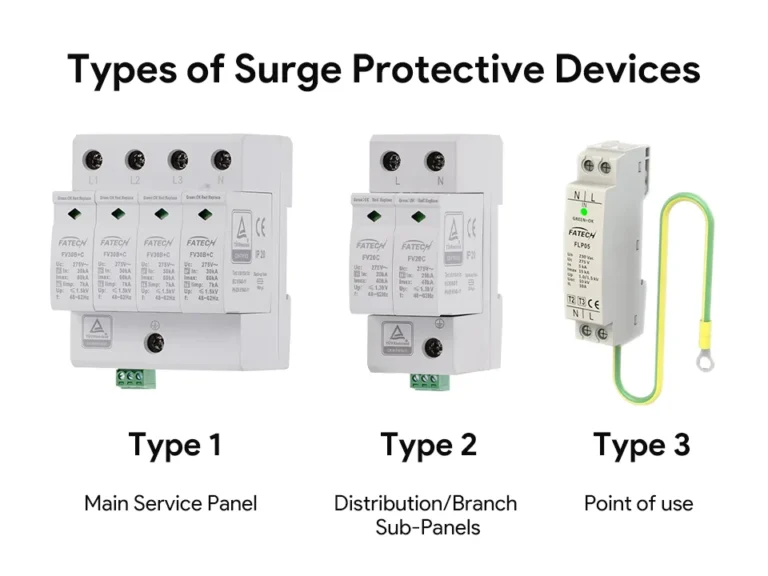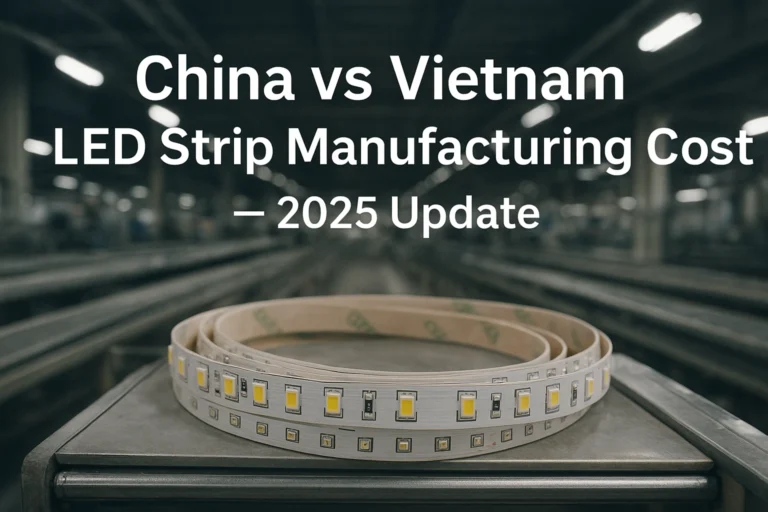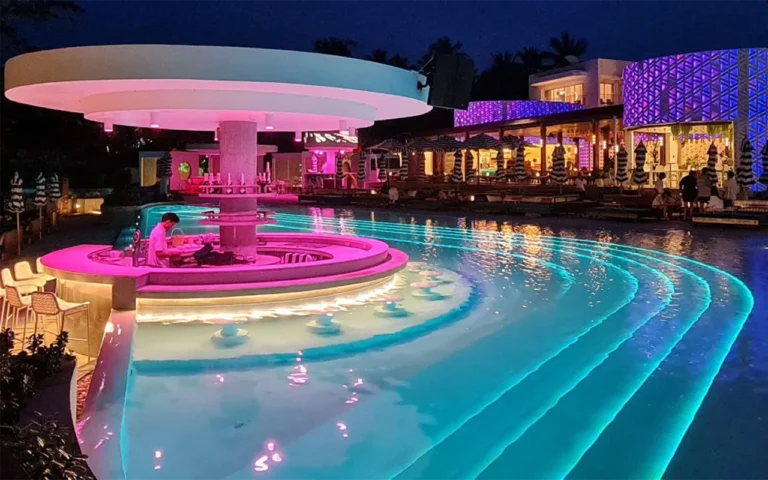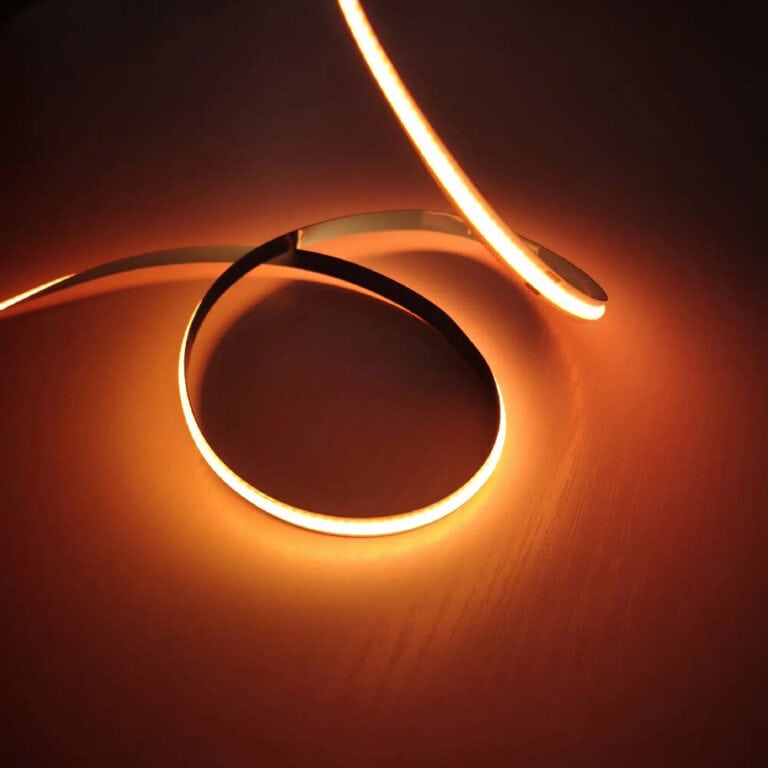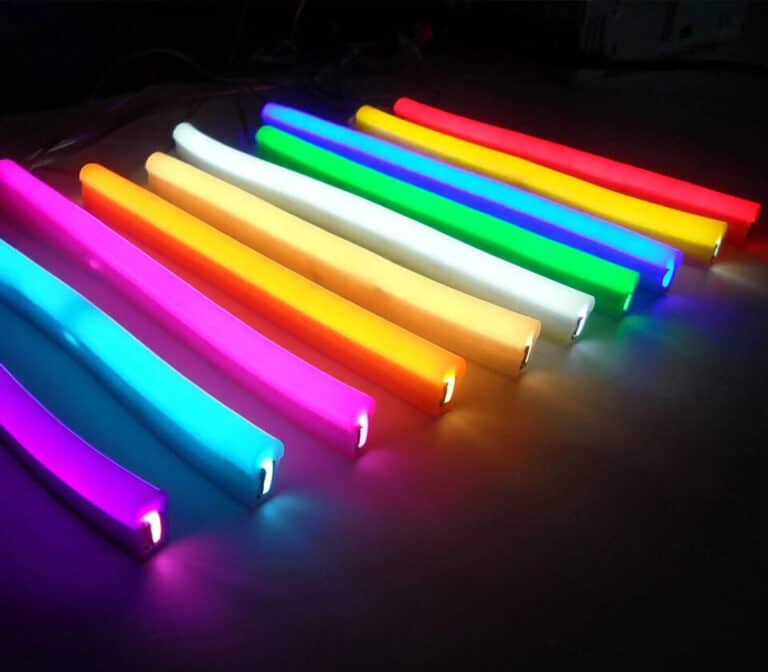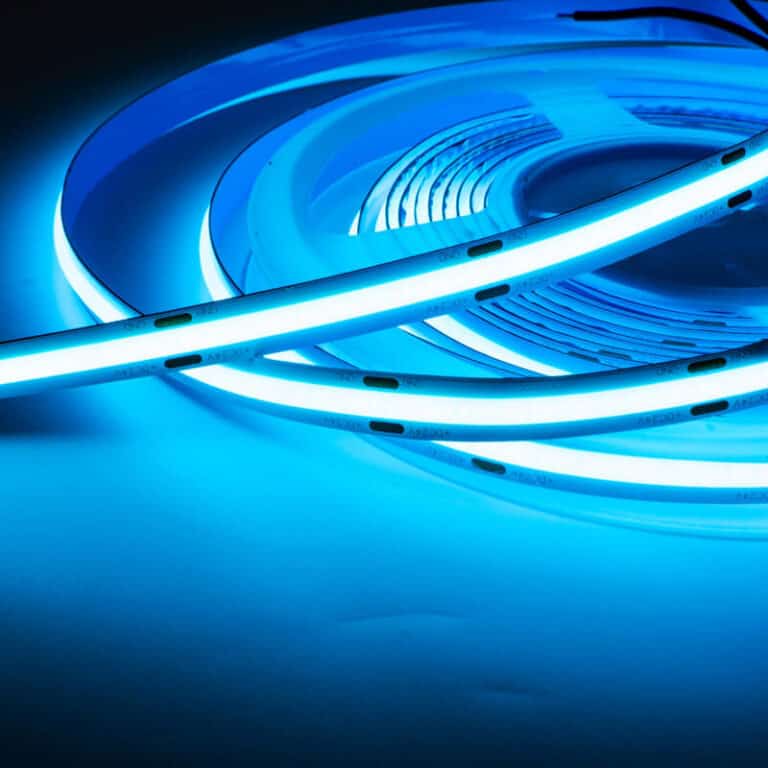Imagínese entrar en una oficina o en un centro comercial y sentirse cómodo al instante, gracias a las luces lineales LED antirreflectantes de UGR, sin entrecerrar los ojos ante las luces duras, sin distraerse con reflejos deslumbrantes.
En los espacios comerciales de hoy, la iluminación ya no se trata solo de brillo. Con la iluminación LED baja de UGR (UGR ≤ 19), el deslumbramiento se minimiza y los ojos están más felices, ya sea que esté trabajando en un informe, buscando productos o asistiendo a una conferencia. Se trata de crear un entorno donde las personas puedan concentrarse, comprar o estudiar sin fatiga visual.
Estas luces están cuidadosamente diseñadas con componentes ópticos inteligentes, como difusores, lentes y persianas de panal, para garantizar que la luz se propague uniformemente sin picos agresivos. el resultado? Un cómodo entorno de iluminación comercial que mejora la productividad, mejora la experiencia del cliente y eleva la estética general del espacio.
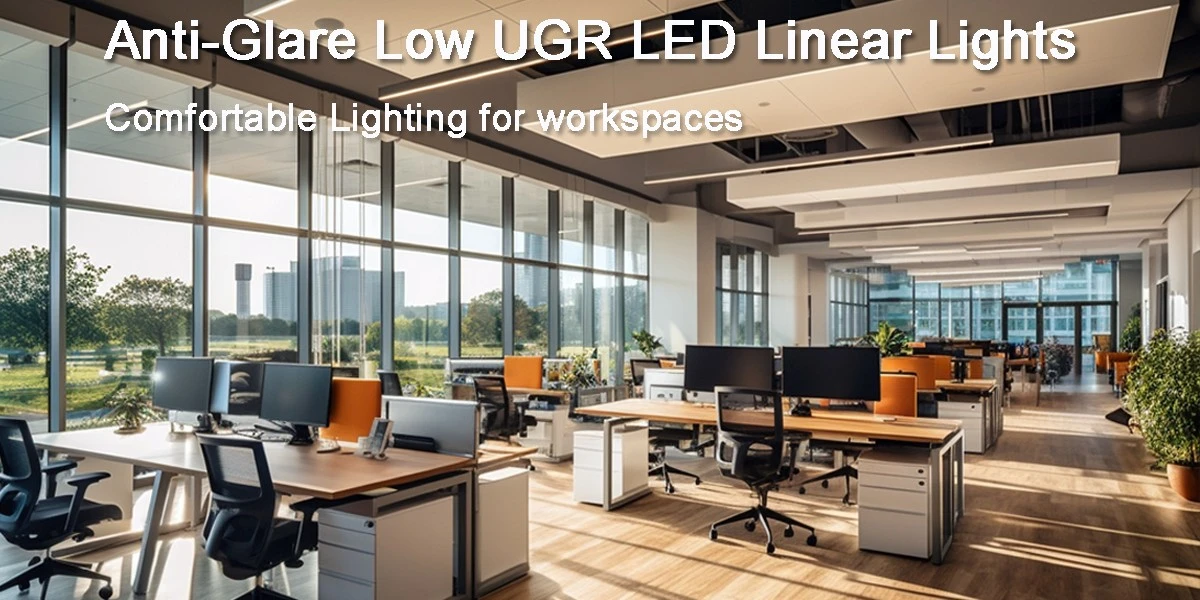
¿Qué es UGR y por qué es importante en el diseño de iluminación??
¿Qué es UGR?
La calificación de deslumbramiento unificado (UGR) es una métrica estandarizada desarrollada por la CIE (Comisión Internacional de Iluminación) para cuantificar las molestias visuales causadas por el deslumbramiento en los entornos de iluminación interior. UGR proporciona un valor numérico que indica la probabilidad de que una fuente de luz cause molestias cuando se ve desde una posición sentada típica.
Los valores de UGR van desde 5 (deslumbramiento muy bajo) hasta 40 (deslumbramiento extremadamente alto). Para espacios comerciales como oficinas, escuelas y entornos minoristas, generalmente se recomienda mantener una UGR por debajo de 19 para garantizar una experiencia visual cómoda.
Referencia de calificación UGR
| Valor UGR | Nivel de comodidad | indicación |
| 10-19 | Bien | El deslumbramiento es aceptable en la mayoría de los espacios de trabajo |
| 20-22 | aceptable | El deslumbramiento puede ser notable pero no demasiado perturbador |
| 22-25 | fronterizo | El deslumbramiento puede ser desagradable |
| >25 | inaceptable | El deslumbramiento es muy desagradable |

Cómo se calcula la UGR?
UGR no es una propiedad fija de una luminaria, pero depende de la instalación de iluminación en su conjunto. Los factores que influyen en la UGR incluyen:
Luminancia de fuentes de luz
- Luminancia de fondo
- Posición del observador y ángulo de visión
- geometría de la habitación
- Reflectancia superficial
- Disposición de luminarias (espaciado, altura, orientación)
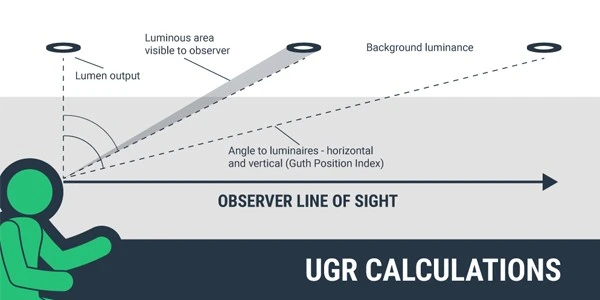
En la práctica, se utiliza comúnmente software como Dialux, Relux o AGI32 para simular estos parámetros y calcular los valores de UGR. De acuerdo con el "método de tabla UGR" de TRILUX, se aplican los tamaños de sala estandarizados, los valores de reflectancia de la superficie y las posiciones de los observadores para hacer que los resultados sean comparables entre diferentes productos.
Disposición estandarizada del observador y del plano de la luminaria horizontal, posicionado en H = H – P – 1,2 (en metros) por encima del nivel de los ojos del observador para posiciones sentadas, donde P representa la longitud de suspensión de la fila de la luminaria.
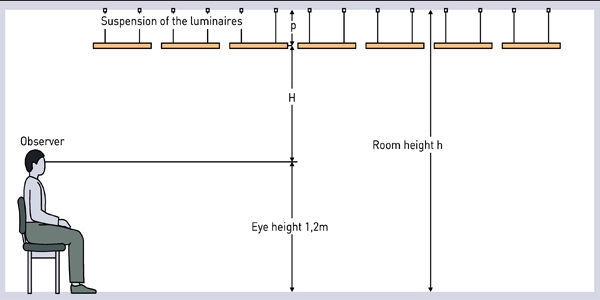
Para arreglos de luminarias estrechas (s = 0,25 h), el valor de UGR permanece casi independiente de la posición de visualización del observador.
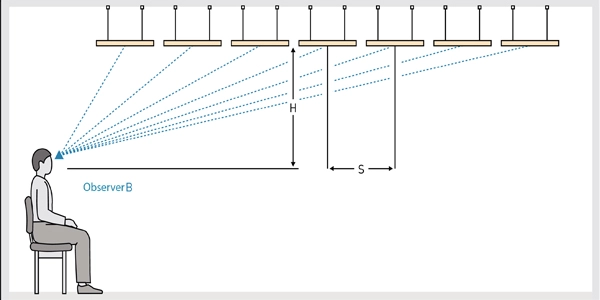
Con un espacio más amplio de luminarias, el Observer B1 experimenta una UGR más baja, mientras que el Observador B2 ve una UGR más alta. Sin embargo, ambos valores generalmente permanecen por debajo del nivel de UGR observado en arreglos de luminarias estrechas.
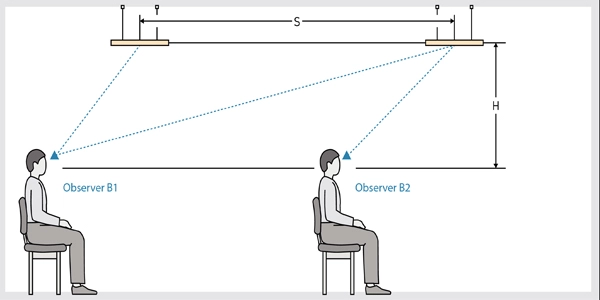
Nota: Según EN 12464-1, las tablas UGR también pueden basarse en distancias de luminarias mayores que S = 0,25 H. Por ejemplo, en Gran Bretaña, S = 1,0 h se usa comúnmente, lo que da como resultado valores de UGR más bajos y una mayor eficiencia de luminaria. Sin embargo, esto requiere que los diseñadores revisen cuidadosamente las posiciones de los observadores para evitar un mayor deslumbramiento en ciertos ángulos de visión.
¿Por qué importa la UGR?
Mejorar la comodidad visual
La iluminación baja UGR reduce el deslumbramiento directo y los puntos de acceso, minimizando la tensión ocular durante las actividades prolongadas, como trabajar en una computadora, leer o asistir a clases.
Apoyando la productividad
El deslumbramiento bien controlado mejora la concentración y el rendimiento. Los estudios muestran que los empleados o estudiantes en entornos de bajo brillo mantienen la concentración por más tiempo y experimentan menos fatiga.
Creando un ambiente profesional y acogedor
En los entornos minoristas o de hospitalidad, la iluminación de bajo brillo garantiza que los productos, las pantallas y las características arquitectónicas sean claramente visibles sin molestias, lo que mejora la experiencia del cliente.
Lograr los objetivos de la UGR
Los fabricantes a menudo etiquetan los productos como "UGR<19", pero esto no garantiza que la luz por sí sola logre la calificación. En cambio, indica que el diseño óptico de la luminaria (por ejemplo, difusores, persianas, lentes) admite el logro del objetivo cuando se instala correctamente en un entorno adecuado.
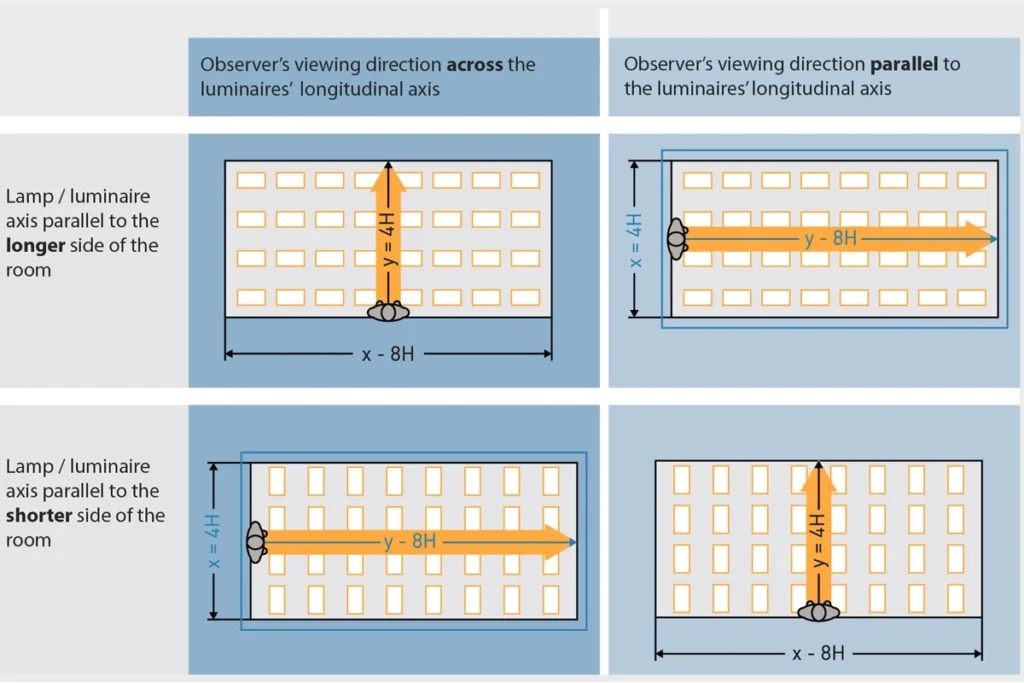
La dirección de visualización del observador se muestra a través (izquierda) y paralela (derecha) al eje de la luminaria, que se puede alinear con el lado más largo (superior) o más corto (abajo) de la habitación. coordenadas x (a través) y su (paralelo) Indica posiciones de ejemplo, resaltadas en azul y negro para mayor claridad.
Características de la luz lineal LED antirreflejo UGR LED
Las luces lineales LED UGR de bajas están diseñadas para reducir las molestias visuales y crear cómodos espacios comerciales. Su rendimiento está determinado no solo por los chips LED, sino también por los componentes ópticos, el diseño de la carcasa y la distribución precisa de la luz.
Componentes ópticos
difusor
Propósito: distribuye uniformemente la luz, reduce los puntos de acceso y suaviza el deslumbramiento.
tipos: Difusores PMMA/PC microestructurados, superficies esmerisas o mate.
luneta
Propósito: Controla el ángulo del haz, asegurando que la luz se dirija al espacio de trabajo, evitando el deslumbramiento directo a los ojos.
tipos: Lentes lineales, lentes de PC de grado óptico.
lumbrera
Propósito: Protege la luz directa de la línea de visión, minimizando el deslumbramiento mientras mantiene el brillo en las superficies de trabajo.
Material y diseño: Aluminio o plástico; tamaño de celda, profundidad y espaciado afectan directamente a la UGR.
reflector
Propósito: Optimiza la distribución de la luz, reduce las zonas de alta luminancia y evita el deslumbramiento directo.
Material: Superficies recubiertas de aluminio de alta reflectividad.
Chip y carcasa LED
Chip LED de alta CRI
Asegura la reproducción natural del color (CRI>80 o 90), reduce la fatiga visual y funciona sinérgicamente con componentes ópticos para mejorar la comodidad.
Diseño de vivienda
Los diseños de bordes profundos o blindados reducen el brillo directo que observan los ocupantes. La profundidad de la canaleta ligera y la geometría de los accesorios juegan un papel clave en la reducción de UGR.
Integración y distribución de luz
La combinación de los componentes anteriores permite un control preciso de la dirección e intensidad de la luz, asegurando una iluminación uniforme en las superficies de trabajo manteniendo el valor de UGR bajo.
Los diseñadores pueden lograr UGR<19 en instalaciones típicas de oficina, educación o minorista a través de una cuidadosa selección de difusores, lentes y geometría de carcasa.
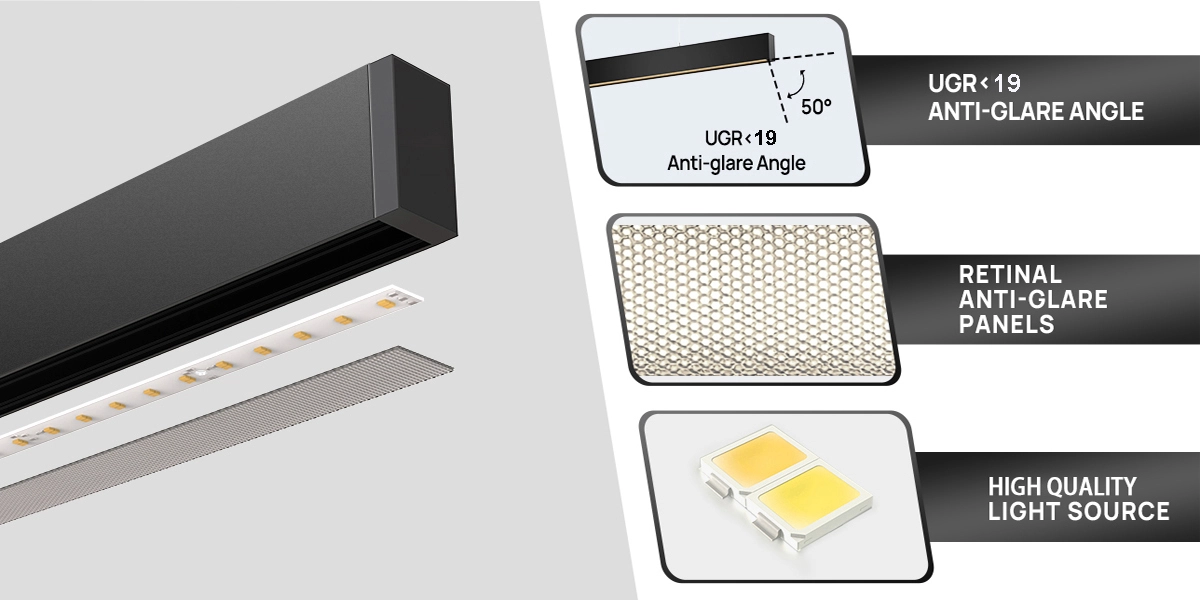
Aplicaciones de luz lineal LED UGR baja
Las luces lineales LED UGR de bajas son ampliamente utilizadas en espacios comerciales e institucionales modernos donde la comodidad visual es una prioridad. Al minimizar el deslumbramiento, ayudan a crear entornos productivos, acogedores y estéticamente agradables.
Iluminación de oficinas
En oficinas de planta abierta, salas de reuniones y espacios de trabajo conjunto, la iluminación sin deslumbramiento reduce la fatiga visual y soporta largas horas de trabajo en la computadora. Mantener UGR<19 es a menudo un requisito de diseño en entornos corporativos para cumplir con los estándares internacionales de iluminación (por ejemplo, EN12464).
Centros comerciales y comerciales
Los espacios comerciales se benefician de la iluminación de baja UGR, ya que proporciona una visibilidad clara del producto sin causar molestias a los compradores. Las luces lineales con difusores antirreflejo o persianas mejoran la visualización de productos mientras mantienen la experiencia de compra cómoda y acogedora.
instituciones educativas
Las aulas, las bibliotecas y las salas de conferencias requieren una iluminación que apoye la concentración y reduzca la fatiga visual. Las luces lineales LED UGR de baja ayuda ayudan a los estudiantes y profesores a mantenerse enfocados, creando un ambiente óptimo para el aprendizaje y la lectura.
Hospitalidad y espacios públicos
En hoteles, vestíbulos, restaurantes y áreas de espera públicas, la iluminación debe equilibrar la comodidad y la estética. Las luminarias lineales de baja UGR evitan las molestias para los huéspedes mientras mejoran los detalles arquitectónicos, la señalización y el ambiente interior.
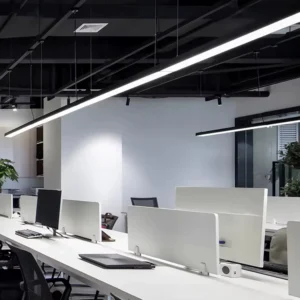
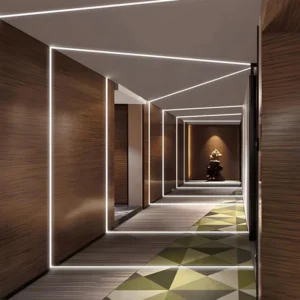
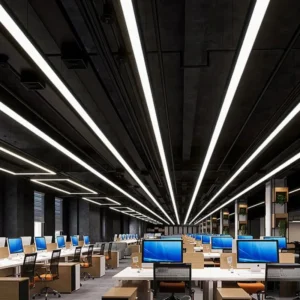
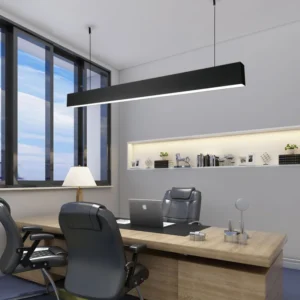
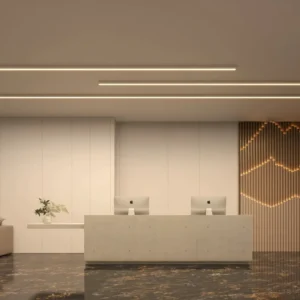
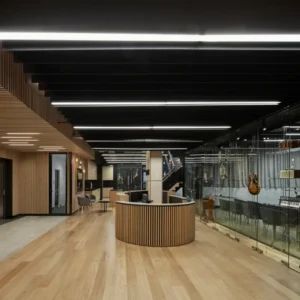
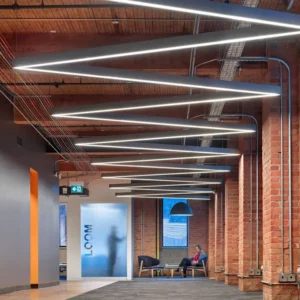

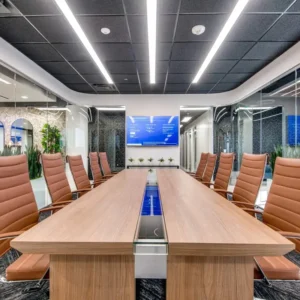
Comparación: Luz lineal UGR baja frente a iluminación convencional
Al evaluar la iluminación para espacios comerciales, es importante comparar las luces lineales LED UGR con lámparas convencionales como lámparas fluorescentes estándar, paneles LED básicos o luces lineales no optimizadas. Las diferencias destacan por qué el control del deslumbramiento es esencial en el diseño de iluminación moderno.
Confort visual
- Luz lineal baja UGR: diseñada con difusores, persianas o reflectores para reducir el deslumbramiento, creando una iluminación suave y equilibrada que minimiza la tensión ocular.
- Iluminación convencional: a menudo produce deslumbramiento directo o puntos brillantes visibles, especialmente de tubos desnudos o paneles de baja calidad, lo que provoca molestias durante una larga exposición.
Cumplimiento de las normas
- Luz lineal baja UGR: cumple con los requisitos de EN12464, estándar de construcción de pozos y pautas de iluminación LEED, especialmente el criterio UGR<19 en oficinas y aulas.
- Iluminación convencional: puede no cumplir con los requisitos de deslumbramiento modernos, lo que la hace inadecuada para proyectos donde la certificación y el confort visual son importantes.
Productividad y experiencia de usuario
- Luz lineal UGR baja: mejora el enfoque, reduce la fatiga y crea una atmósfera agradable, apoyando directamente una mayor productividad y satisfacción del cliente.
- Iluminación convencional: puede causar molestias en los ojos, dolores de cabeza y una concentración reducida, afectando negativamente a la eficiencia del trabajo y la experiencia del usuario.
Estética e integración arquitectónica
- Luz lineal baja UGR: ofrece diseños elegantes, salida de luz uniforme y deslumbramiento mínimo, mejorando la estética arquitectónica de las oficinas modernas, los espacios minoristas y de hospitalidad.
- Iluminación convencional: los diseños anticuados o la distribución de luz no controlada pueden alterar la estética interior y crear una iluminación desigual.
tabla de resumen
| Aspecto | Luz lineal UGR baja | Iluminación convencional |
| control de deslumbramiento | UGR<19, cómodo | A menudo >22, notable o duro |
| normas | Cumple con EN12464, bueno, LEED | Puede fallar los requisitos |
| Confort visual | Suave, equilibrado, agradable a los ojos | Duro, causa tensión |
| productividad | Mejora el enfoque y el bienestar | Reduce el enfoque, puede causar fatiga |
| Estética | Ajuste moderno, limpio, arquitectónico | Luz desigual, aspecto anticuado |
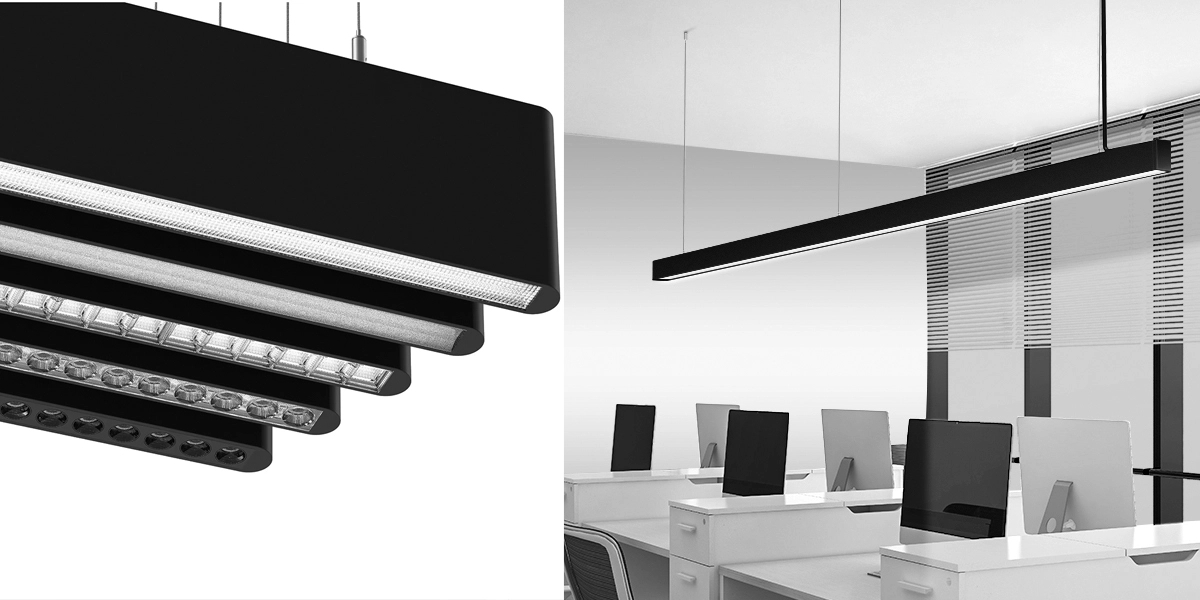
Tamaño del perfil: W25*H85mm
Longitud opcional: 1200/ 1500/ 1800/ 2400 mm
Temperatura de color (CCT): 3000 K/ 4000 K/ 6000 K/ CCT
Eficiencia luminosa de la lámpara (lm/W): 100 lm/W
Potencia: 40W/50W/60W/80W
Índice de representación del color (RA): >80, >90
Tipo de fuente de luz: LED SMD2835
Atenuación disponible: No dim/ 0-10 V/ Atenuación DALI
Material principal: aluminio + PC / PMMA / difusor prismático
Color de la carcasa: negro/blanco/plata
Instalación: suspendido/superficie/montado en la pared
Cómo seleccionar la luz LED lineal de UGR de baja y la lista de verificación del comprador
Al elegir la iluminación lineal antirreflejo para oficinas, escuelas, comercios minoristas o proyectos de hospitalidad, no es suficiente mirar las hojas de datos de productos. Los compradores deben verificar si los accesorios realmente cumplen con los requisitos de rendimiento y cumplimiento. Las siguientes pautas convierten las características técnicas en controles de adquisición prácticos.
Verificar informes de prueba de UGR
- Solicite datos oficiales de prueba de UGR al proveedor, no solo reclamos de marketing.
- Confirme que los valores se prueban en las condiciones EN 12464-1 (por ejemplo, UGR ≤19 para oficinas/aulas).
Solicitar muestras para la evaluación en el sitio
- Compruebe el control del deslumbramiento, la uniformidad de la luz y la comodidad en un entorno de proyecto real.
- Coloque las luminarias a las alturas de montaje previstas para simular el efecto final.
Confirmar Certificación y Cumplimiento
- Busque el cumplimiento de CE, RoHS, UL y EN 12464-1.
- La certificación garantiza la seguridad, la calidad y la idoneidad de las licitaciones internacionales.
Evaluar la flexibilidad del proyecto
- ¿El fabricante ofrece longitudes personalizadas, CCT ajustable o Smart Control (DALI/DMX)?
- La flexibilidad garantiza que la iluminación se adapte a los requisitos de evolución del proyecto.
Verifique la garantía y el soporte postventa
- Se recomienda una garantía mínima de 3 a 5 años.
- El servicio posventa confiable reduce los riesgos en proyectos a largo plazo.
Lista de verificación del comprador
| Criterios | Qué verificar |
| Clasificación UGR | Solicite informe probado, oficinas/aulas ≤19, industria ≤16 |
| Evaluación de muestra | Comprobar el control del deslumbramiento, uniformidad, comodidad en el espacio real |
| Certificación | EN 12464-1, CE, RoHS, UL o aprobaciones locales |
| Flexibilidad | Longitudes personalizadas, CCT sintonizable, Opciones DALI/DMX |
| Garantía y Servicio | Garantía de 3 a 5 años, soporte posventa confiable |
Conclusión
Las luces lineales LED de baja UGR representan un avance significativo en la iluminación comercial e institucional, ofreciendo una combinación equilibrada de comodidad visual, eficiencia energética y flexibilidad de diseño. Al comprender el concepto de UGR y seleccionar accesorios con componentes ópticos bien diseñados, los compradores pueden crear entornos que reduzcan el deslumbramiento, mejoren la productividad y proporcionen una experiencia agradable a los ocupantes. Desde oficinas y aulas hasta espacios comerciales y entornos hoteleros, la iluminación UGR baja se reconoce cada vez más como un estándar para la iluminación moderna centrada en el ser humano.
